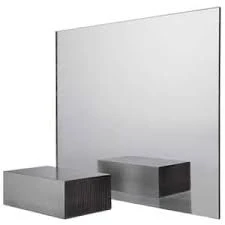

The Art and History of Glass Fishing Floats
Fishing has been an essential part of human civilization for thousands of years, and with it comes the development of various tools designed to enhance the efficiency and effectiveness of the trade. One such tool is the fishing float, an item that has been used by fishermen worldwide to keep nets and lines suspended in the water. Among the many types of floats, glass fishing floats hold a unique place in history, culture, and craftsmanship. This article delves into the fascinating world of glass fishing floats, tracing their origins, uses, and the artistry involved in their production.
Historical Significance
Glass fishing floats first emerged in the late 19th century in countries like Norway, Japan, and the United States. These floats were typically crafted by skilled artisans using local glass-making techniques. The primary purpose of a fishing float is to keep fishing nets at specific depths in the water, allowing for better catches while minimizing the risk of the gear becoming submerged and lost.
In the early days, fishermen fashioned their floats from whatever materials were readily available, including wood, cork, and even metal. However, the introduction of glass revolutionized the industry. Glass floats were not only more durable but also provided buoyancy that could withstand the rigors of ocean currents. The beauty of glass also became part of their charm, as many fishermen began to appreciate their aesthetic appeal.
Design and Craftsmanship
The manufacturing of glass fishing floats is an art form in itself. Traditional methods involve blowing glass into spherical or oval shapes, allowing for natural variations that make each float unique. Various colors, patterns, and textures offer character and individuality to each piece. Some floats feature intricate designs, embossed patterns, or even markings that indicate their origin. These nuances not only serve as decorative elements but also help in tracking the floats back to specific regions or fishermen.
The craftsmanship of glass fishing floats reflects the culture and heritage of the regions they come from. For example, Japanese glass floats often showcase beautiful aqua or green tones, which were inspired by local coastal waters. In contrast, Norwegian floats are often made in more vibrant colors, reflecting the playful aesthetics of Scandinavian design.

Cultural Impact and Collectibility
Over the years, glass fishing floats have transcended their functional origins to become sought-after collectibles. Many enthusiasts scour beaches and coastal areas to find these artifacts, which often wash ashore after storms. Collectors appreciate the history imbued within each float, viewing them as tangible links to the lives and struggles of fishermen of the past.
Some collectors specialize in floats from specific countries or eras, while others seek out unique designs. The variations in size and color contribute to their desirability, with rare hues and unusual shapes fetching high prices at auctions. This trend has breathed new life into the appreciation of these seemingly simple objects, elevating them to pieces of art and history.
The Modern Challenge
Despite their popularity, glass fishing floats face challenges in today's fishing industry. The rise of synthetic materials has led to a decline in traditional glass float production. Many fishermen now opt for plastic or foam floats, which are often less expensive and more durable. However, this shift has sparked concerns about environmental impact and sustainability.
While glass floats break down naturally over time, synthetic alternatives contribute to plastic pollution in oceans and waterways. This reality has led some artisans and craftsmen to advocate for the return to glass as a more environmentally friendly option, promoting traditional methods and sustainable practices in glass-making.
Conclusion
Glass fishing floats embody a unique intersection of utility, history, and artistry. They remind us of the evolution of fishing practices and the rich cultural heritage surrounding them. Collectors and enthusiasts continue to celebrate these beautiful artifacts, fostering a deeper appreciation for the artistry involved in their creation. As the world navigates the challenges of modern fishing and sustainability, glass fishing floats stand as a testament to a timeless tradition, evoking nostalgia while encouraging a forward-thinking approach to conservation and craftsmanship.